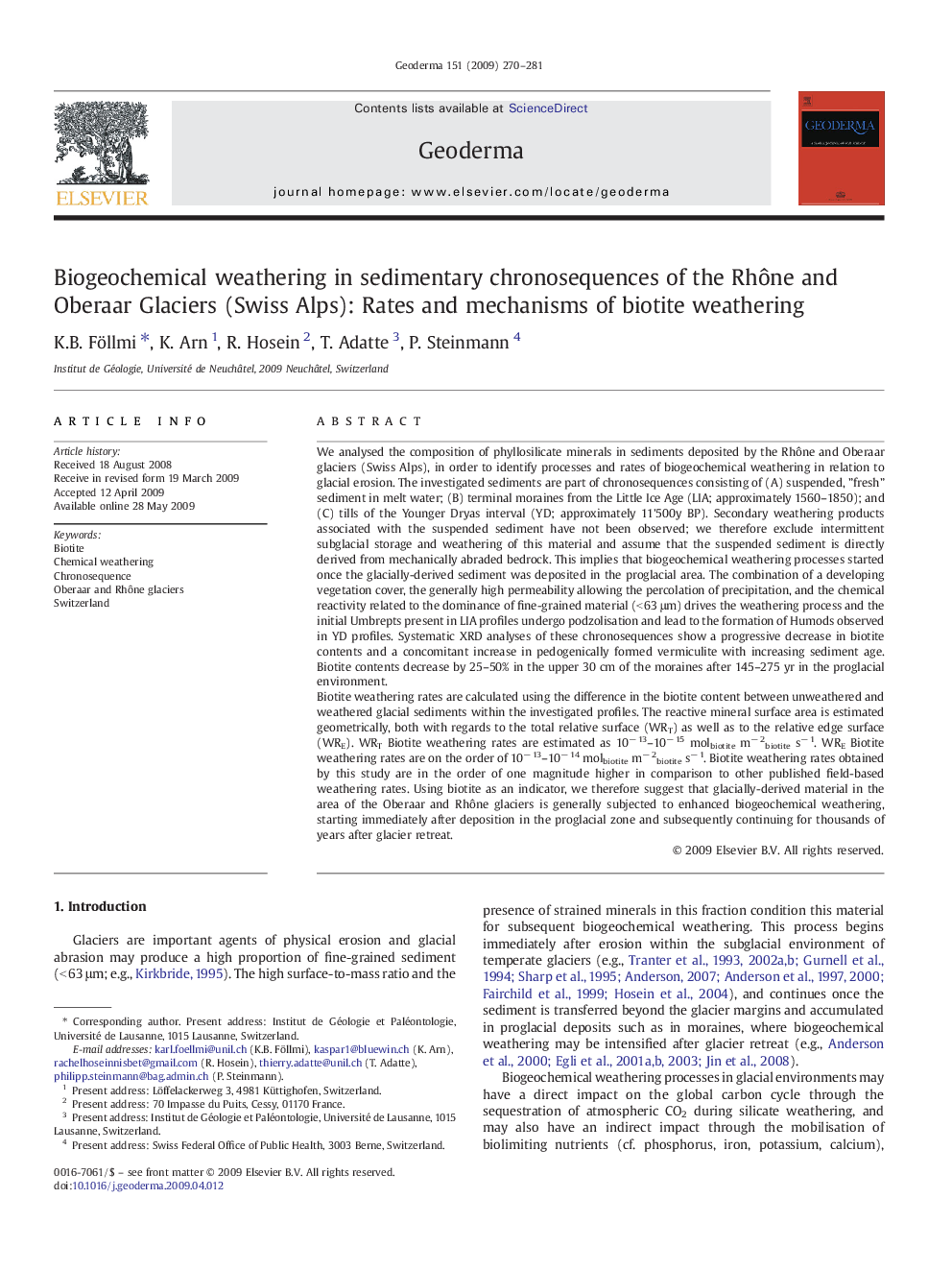| کد مقاله | کد نشریه | سال انتشار | مقاله انگلیسی | نسخه تمام متن |
|---|---|---|---|---|
| 4575183 | 1629531 | 2009 | 12 صفحه PDF | دانلود رایگان |

We analysed the composition of phyllosilicate minerals in sediments deposited by the Rhône and Oberaar glaciers (Swiss Alps), in order to identify processes and rates of biogeochemical weathering in relation to glacial erosion. The investigated sediments are part of chronosequences consisting of (A) suspended, ”fresh” sediment in melt water; (B) terminal moraines from the Little Ice Age (LIA; approximately 1560–1850); and (C) tills of the Younger Dryas interval (YD; approximately 11'500y BP). Secondary weathering products associated with the suspended sediment have not been observed; we therefore exclude intermittent subglacial storage and weathering of this material and assume that the suspended sediment is directly derived from mechanically abraded bedrock. This implies that biogeochemical weathering processes started once the glacially-derived sediment was deposited in the proglacial area. The combination of a developing vegetation cover, the generally high permeability allowing the percolation of precipitation, and the chemical reactivity related to the dominance of fine-grained material (< 63 μm) drives the weathering process and the initial Umbrepts present in LIA profiles undergo podzolisation and lead to the formation of Humods observed in YD profiles. Systematic XRD analyses of these chronosequences show a progressive decrease in biotite contents and a concomitant increase in pedogenically formed vermiculite with increasing sediment age. Biotite contents decrease by 25–50% in the upper 30 cm of the moraines after 145–275 yr in the proglacial environment.Biotite weathering rates are calculated using the difference in the biotite content between unweathered and weathered glacial sediments within the investigated profiles. The reactive mineral surface area is estimated geometrically, both with regards to the total relative surface (WRT) as well as to the relative edge surface (WRE). WRT Biotite weathering rates are estimated as 10− 13–10− 15 molbiotite m− 2biotite s− 1. WRE Biotite weathering rates are on the order of 10− 13–10− 14 molbiotite m− 2biotite s− 1. Biotite weathering rates obtained by this study are in the order of one magnitude higher in comparison to other published field-based weathering rates. Using biotite as an indicator, we therefore suggest that glacially-derived material in the area of the Oberaar and Rhône glaciers is generally subjected to enhanced biogeochemical weathering, starting immediately after deposition in the proglacial zone and subsequently continuing for thousands of years after glacier retreat.
Journal: Geoderma - Volume 151, Issues 3–4, 15 July 2009, Pages 270–281